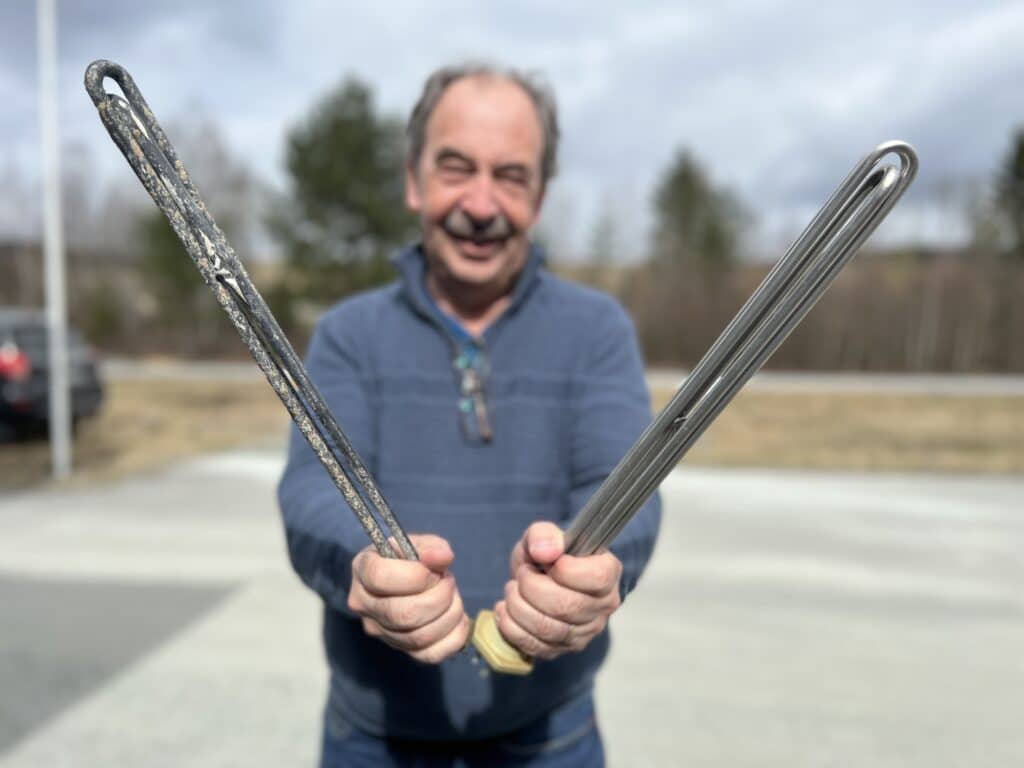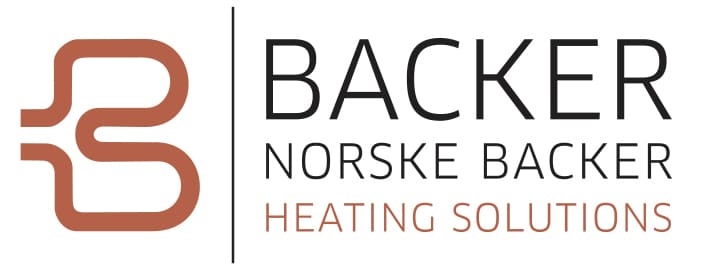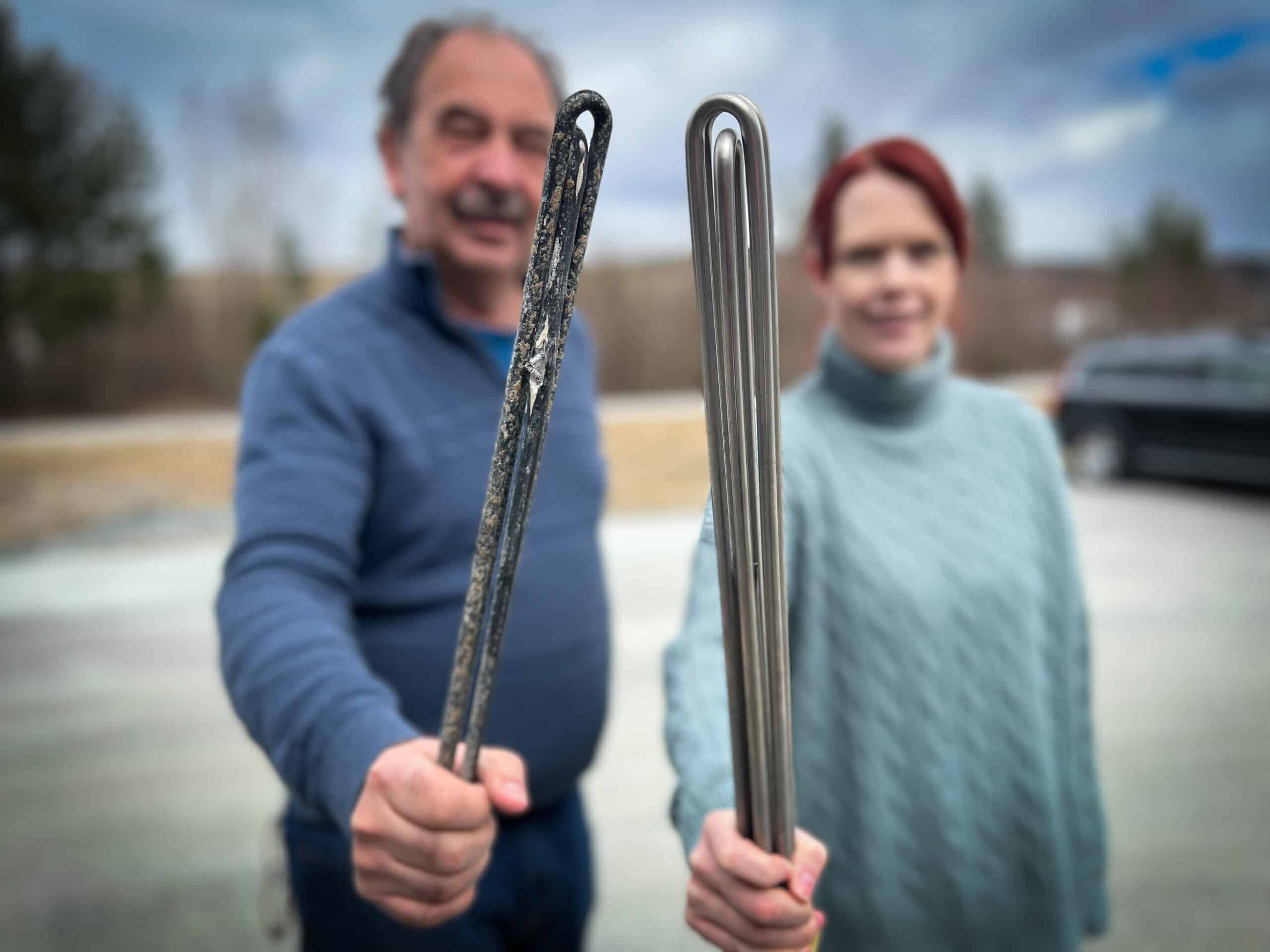Adequate Information Before the Order Entry Secures the Customer a more Robust and Suited Product.
The sale, engineering and production teams have a long experience and a solid competence in design, construction and production of heating solutions with electrical heating elements, which secures that our products meet the requirements from wide range of areas of use.
Electrical heating solutions as these are often referred to as heaters.
Sporadically, however, there will be projects and issues that challenges us, which must be taken into account to make sure that the customer ends up with the best possible product. Such challenges normally appear in projects where difficult or unknown factors plays a role. It can also be complaints on a product, or deviant mode of operations according to the customers’ expectations.
These are cases we learn a great deal from, and which we bring with us in future project calculations.
Dette er saker vi tar lærdom av, og som vi har med oss i fremtidige prosjektberegninger.
The more information we get at an early stage about the products’ installation and operation environment, the more suited and robust the product ends up being.
The Process from Dialogue with the Sales Department through to Construction, Ordering, and Production
Customer inquiries to our sales department where the needs and requirements for an electric heating solution are presented typically mark the beginning of a sale at Norske Backer. Based on the information provided, an assessment is made regarding which of our products meet the customer's needs.
Therefore, the dialogue between the customer and sales engineer must contain as much information as possible. The quality of the product sold to the customer often correlates with the quality of the information provided beforehand.
If the customer's needs are difficult to specify, or if our standard products do not fit the purpose, our construction department is involved to provide assistance, enabling us to provide a tailored solution.
Once the offer is accepted, an order is created, and the production process commences.
Information Requirements and Influencing Factors
The sales engineer's dialogue with the customer prior to entering an order aims to gain an overview of all factors that will affect the product's (heater's) performance, lifespan, and general quality - particularly safety and legality - in a manner that satisfies both the customer's needs and legal requirements.
Basic information to be gathered before an order is handed over to the construction department includes:
- What electrical operating voltage will the heater be connected to?
- What electrical power output should it have?
- What type of medium will it be heating?
- What is the desired operating temperature for the installation where the heater will operate?
- Placement of the heater - indoors, outdoors, general environment, geographic location, etc.
The industry to which the customer belongs often provides clues as to which product we will eventually arrive at. Whether it's a plumbing company needing something within HVAC, a company in the ventilation industry with a requirement in HVAC, or industrial companies needing process heat. Sometimes there may be heating needs within the oil and gas industry - either offshore or onshore, chemical industry, maritime sectors, or food production.
An essential clarification is the medium to be heated - air, liquid, or gases and chemicals. Additionally, it must be clarified what the desired operating temperature is, or what the ambient temperature or environment is where the product will be operated.
We must also ascertain if the customer has specific requirements for physical stress on the product, standards, pressure resistance requirements, any certifications, and similar considerations.
What Can Affect the End Result of the heating solution?
The product we deliver must be installed, connected, and put into operation under the same conditions, media, and environment that were the basis for the calculation and construction of the product.
Deviations from this can, to varying degrees, affect performance, efficiency, lifespan, safety, and in some cases, legality.
Heating elements in a heater designed and intended for use in flowing water will quickly overheat and burn out if used in air.
The same heating elements will also overheat if used in oil, but it takes a bit longer before they burn out. This will also lead to charring of the oil against the surface of the heating elements, and the properties of the oil deteriorate or are destroyed.
Media
An electric heating product from Norske Backer is designed, engineered, and intended for use in a specific medium, or at least a limited range of media. If such an electric heating product is used in other media than intended, it can lead to deterioration of the medium, damage to the product, and its performance may not meet the customer's desires, needs, and requirements.
Examples of Factors that can be Easily Overlooked
It is not easy to predict which media, chemicals, or substances a heater may encounter, and sometimes the customer or end-user does not consider factors that will affect the product.
An example is drinking water produced from seawater and purified through the reverse osmosis process, which is more corrosive than natural freshwater. This process is widely used on, for example, oil platforms and ships, and therefore, special considerations must be taken if the heaters are to be used in these areas.
Another example is a customer who wanted to heat a tank with seawater to 20-30 degrees. Seawater is corrosive, so we chose to produce the heating elements in titanium. After a few months, one element failed due to corrosion, which puzzled us until we clarified that the tank was emptied of water once a week for cleaning.
The cleaning agent's data sheet showed that it contained a substance that reacted corrosively with titanium. The customer switched to a cleaning agent that did not contain this substance, and the problem was solved.
A third example is a customer with water from a private well who experienced heating elements in the water heater failing more frequently. The water heater had been in operation for 20 years before the first element failed, but then they began to fail annually. The customer believed that today's heating elements were inferior to those before.
Investigations showed that the lifespan of the heating elements in the water heater was significantly reduced after they started salting the road past the property. The salt content in the groundwater was then elevated, and the elements corroded as a result.
Therefore, it is important for us to be informed about all media and chemicals an electric heater may potentially be exposed to. Not only during operation but also in connection with storage, maintenance, or cleaning. Information about the use of any protective coatings, cleaning agents, chemicals, and other environmental exposures before we begin calculation, design, and production of the electric heater would have led us to choose a different material.

What Happens to the Material?
Alloys of stainless and acid-resistant steel are not completely resistant to corrosion despite their name implying so. However, they are better able to resist corrosion than other steel alloys.
The enhanced ability to resist corrosion is weakened at high temperatures, and the risk of corrosion on the heating elements is greater than at lower temperatures. Corrosion can occur as pitting corrosion, stress corrosion, as well as other types of corrosion, and occurs in virtually all kinds of media and applications.
Drinking water always contains small amounts of various substances such as salts, chalk, humus, iron, and many others, but it will still taste good and be in compliance with Drinking Water Regulations..
Despite this, these substances can still cause corrosion on acid-resistant steel elements. Tests have been conducted where salt, minerals, chalk, and similar were maximized within drinking water regulations, and the water was heated to 75°C. Heating elements in acid-resistant steel AISI 316L lasted for 4 hours before they broke down due to corrosion.
The combination of high temperature and additives or contaminants in the water significantly reduces the lifespan of an element. The thickness of the jacket tube on a heating element is usually only 0.4-0.5 mm and often reaches temperatures that make acid-resistant steel vulnerable to corrosion. Norske Backer uses several types of metals in the heating elements. The choice of material is based on the information we receive from the customer, combined with our knowledge and many years of experience, but new challenges will constantly arise, and it is those we learn from.
Quality and Few Complaints
Despite the factors mentioned here, Norske Backer has only a 0.05% complaint rate per year. If information about the factors mentioned above had been communicated to us at the earliest possible stage, more of the cases of complaints would likely have been avoided.
We are committed to delivering high-quality products and take necessary measures and changes to ensure that the quality is satisfactory. For this, we also depend on such information being exchanged early.
Sometimes we receive inquiries where the customer or client may have unusually high demands for materials and components compared to the specified intended use of the product. Through communication and dialogue we can decide on the best choice of materials and components to reduce the cost for our customer.
We always work to deliver long lasting heating solutions that will survive many years in the intended medium.
Do you need industrial heating? Get in touch!

